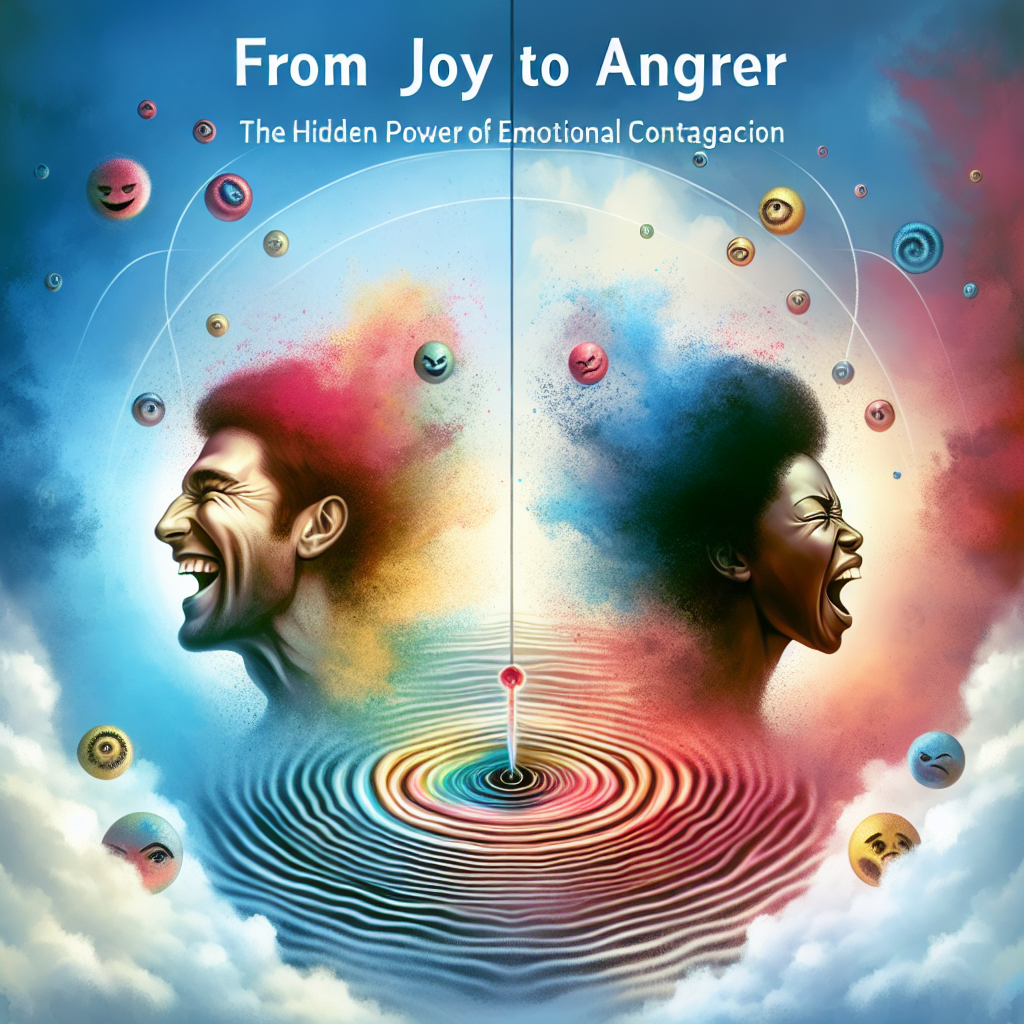
Introduction
Have you ever walked into a room filled with laughter and felt your mood lift, or conversely, found yourself laden with tension after hearing a heated argument? These experiences highlight a profound psychological phenomenon known as emotional contagion. The dynamic transfer of emotions from one person to another occurs continuously, influencing our interactions, decisions, and even our health. In "From Joy to Anger: The Hidden Power of Emotional Contagion," we’ll delve into the mechanics of this fascinating subject, examine real-world examples, and provide you with valuable insights into harnessing this power for positive outcomes.
The Science Behind Emotional Contagion
Emotional contagion is the tendency to mimic and synchronize emotions with another individual. This instinctive process can elevate joyous sentiments or amplify feelings of anger and sadness.
The Mechanisms of Emotional Contagion
Mirror Neurons: These specialized brain cells activate both when we experience an emotion and when we observe someone else experiencing that emotion. They play a crucial role in empathy and emotional resonance.
Facial Feedback: Research suggests that our facial expressions can influence our emotions. For instance, smiling can actually make you feel happier. Thus, when we witness someone else’s expression, we might subconsciously adjust our own.
- Environmental Cues: Our surroundings severely impact our emotional state. A joyful atmosphere can uplift, while a tense environment can drag us down.
Emotional Contagion Across Different Settings
| Setting | Impact of Emotional Contagion |
|---|---|
| Workplace | Optimistic coworkers can enhance productivity, while negativity can stall progress. |
| Social Gatherings | Happy gatherings foster bonds, but conflict can spoil the atmosphere. |
| Online Interactions | Social media amplifies emotions, frequently leading to viral sentiments, both positive and negative. |
From Joy to Anger: Case Studies
Case Study 1: The Workplace Dynamics
In a 2018 study by the University of Michigan, researchers explored the effects of emotional contagion in a corporate environment. Teams led by optimistic leaders reported higher morale and productivity levels compared to teams with pessimistic leaders. The study concluded that a leader’s emotional state significantly influenced team dynamics. This case illustrates that the transition from joy to anger—or even vice versa—can have real repercussions on team effectiveness.
Analysis: In this case, it’s clear that joy can foster collaboration and innovation, while anger and negativity can induce competition and conflict, ultimately harming performance.
Case Study 2: Social Media Amplification
Another notable example comes from the realm of social media. A study by the University of California revealed that emotions expressed on platforms like Facebook could spread rapidly among friends, affecting their mood and engagement levels. When users post positive content, their friends are likely to react similarly, fostering a cycle of positivity. However, negative posts can create a ripple effect of anger or frustration.
Analysis: This showcases the dual-edged sword of emotional contagion—social media can be a platform for communal joy or an outlet for collective anger.
Case Study 3: Classroom Environment
In educational settings, a study conducted by Harvard found that happy teachers foster happier students who engage more actively in learning. Conversely, if a teacher exhibits frustration, students often mirror that anger, becoming less interested and more combative. This illustrates the profound influence of emotional contagion on student achievement and classroom climate.
Analysis: The ability to cultivate a positive atmosphere in classrooms sets the foundation for both learning and emotional well-being.
The Hidden Power: Practical Applications
Understanding the hidden power of emotional contagion provides invaluable opportunities for enhancing well-being and productivity. Here are some actionable insights:
1. Cultivate Joyful Environments
Whether at work, home, or social settings, curate uplifting environments. Surround yourself with positive people, share uplifting stories, and practice gratitude. This not only enhances your emotional state but influences those around you.
2. Mindfulness in Communication
Being aware of your emotional state before engaging in conversations is vital. If you feel anger surfacing, take a moment to breathe deeply, recalibrating your emotions before interaction. This awareness cultivates a constructive dialogue rather than escalating conflicts.
3. Emotional Regulation Techniques
Practice emotional regulation techniques such as meditation, cognitive restructuring, or journaling to manage your emotions effectively. By mastering your emotional responses, you can minimize negative contagion and amplify positive interactions.
4. Leverage Group Dynamics
In team settings, leaders should consciously emanate positivity. Engage in team-building exercises that evoke joy and foster connections, which can create a supportive and productive workspace.
5. Promote Emotional Intelligence
Encouraging the development of emotional intelligence within yourself and others enhances recognition and management of emotions. This promotes healthier interactions and mitigates the negative effects of anger.
Conclusion
"From Joy to Anger: The Hidden Power of Emotional Contagion" highlights how emotions are not merely individual experiences but shared phenomena that play a crucial role in our everyday interactions. By being conscious of the emotional currents around us, we can foster environments filled with joy, warmth, and understanding, while diminishing the impact of anger and negativity. By applying the principles of emotional contagion in your personal and professional life, you can elevate not just your mood, but also that of those around you.
Actionable Takeaway
Make a conscious effort this week to spread joy in your interactions. Whether through a kind word, a friendly gesture, or a simple smile, you hold the power to uplift not just yourself but those around you.
FAQs About Emotional Contagion
1. What is emotional contagion?
Emotional contagion is the phenomenon where one person’s emotions and related behaviors directly trigger similar emotions and behaviors in others.
2. How does emotional contagion affect relationships?
It can strengthen relationships through shared positive emotions or create rifts through shared negative emotions. Awareness of this can help manage connections more effectively.
3. Can emotional contagion be positive?
Absolutely! Positive emotional contagion can enhance group cohesion, increase morale, and foster creativity within teams.
4. What role does social media play in emotional contagion?
Social media can amplify emotions, allowing for rapid emotional shifts among users. Positive posts can create uplifting communities, while negative ones can foster discontent.
5. How can I harness emotional contagion?
Cultivate self-awareness regarding your emotions, surround yourself with positive influences, and practice emotional regulation techniques. This approach allows you to amplify joy and counteract negativity.
By embracing the insights from “From Joy to Anger: The Hidden Power of Emotional Contagion,” you reclaim your emotional narrative, steering it towards positivity and connection. So next time you step into a room or engage in a conversation, remember the potent impact of emotions—not just your own, but those you encounter as well. Your emotional state can change not just your life but the world around you.












